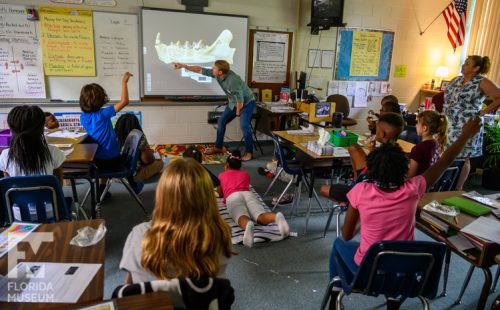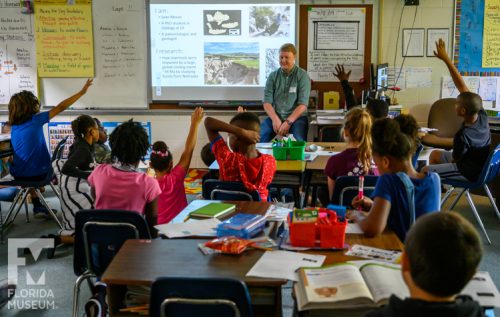Vertebrate paleontologist and UF Zoology PhD student Sean Moran visited the 4th grade classes of Alachua Elementary School on Tuesday October 8th. Sean used anecdotes and specimens from his field work in Nebraska to discuss the differences between observation and inference.

The 4th grade students were first introduced to the ~34 million year old rocks exposed in northwestern Nebraska. Sean then briefly discussed general techniques involved in collecting fossil specimens as well as some of the obstacles that are often associated with field science. After the introduction, the students were shown photos of fossils from several common mammals found in Nebraska and made observations on the teeth of these mammals (e.g., relative size, shape, occlusion). They then used these observations as evidence to infer the diet of the mammals and what extant species the fossils may be related to.
Particularly tricky was the teeth of the insectivore, Leptictis, which is similar to modern-day shrews. A student in one of the four classes quickly inferred the species likely ate bugs due to its very point teeth, but students in the other classes waffled between carnivory or omnivory before being led to what scientists currently hypothesize the diet to be and why.